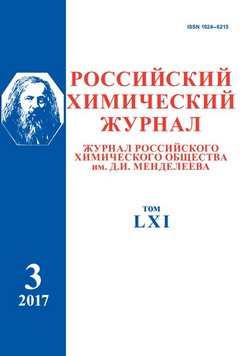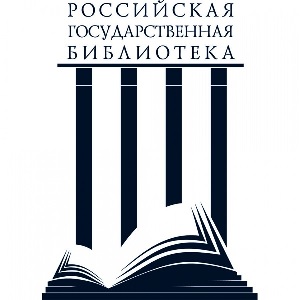ПРИМЕНЕНИЕ ПОЛИМЕРНЫХ ДИСПЕРСИЙ В КОМПЛЕКСНЫХ ДОБАВКАХ ДЛЯ ТЯЖЕЛОГО БЕТОНА
Аннотация
Коррозионная стойкость бетонных и железобетонных изделий является одним из основных свойств, влияющих на прочность сооружений, возводимых из данных материалов. Улучшение антикоррозионной защиты таких изделий является актуальной задачей современного материаловедения.
Статья посвящена исследованию влияния новой комплексной добавки на физико-механические свойства тяжелой бетонной смеси, такие как водопоглощение и прочность.
Объектом исследования является бетон марки В22,5. Комплексная добавка получена путем гомогенизации водной эмульсии нефтеполимерной смолы и суперпластификатора С-3.
Водопоглощение и прочность образцов определяли согласно ГОСТ 12730.3-2020 и ГОСТ 28570-2019 соответственно.
На основе результатов исследования доказано, что комплексная добавка обладает пластифицирующими и гидрофобизирующими свойствами при добавлении в тяжелую бетонную смесь. Определено влияние концентрации введенной комплексной добавки на водопоглощение и предела прочности при сжатии, что позволило определить оптимальный интервал концентраций добавки для введения в бетонную смесь для использования ее при изготовлении бетонных и железобетонных изделий.
Для цитирования:
Баранников М.В., Поляков И.В., Поляков В.С., Николаева О.И., Виноградова Л.А. Применение полимерных дисперсий в комплексных добавках для тяжелого бетона. Рос. хим. ж. (Ж. Рос. хим. об-ва). 2022. Т. LXVI. № 2. С. 33-38. DOI: 10.6060/rcj.2022662.6.
Литература
Babenkova Yu.V. Methods of investigation of reinforced concrete structures in aggressive environments. E-Scio. 2020. N 4(43). P. 647-654. (in Russian).
Kondratieva N.V., Alfimenkova A.Yu. Investigation of ways to improve the corrosion resistance of reinforced concrete structures. Urban planning and architecture. 2020. V. 10. N 1(38). P. 16-23. DOI: 10.17673/ Vestnik.2020.01.3. (in Russian).
Polyakov I.V., Barannikov M.V., Stepanova E.A. Additives for heavy concrete based on industrial waste from chemical industries. ChemChemTech [Izv. Vyssh. Uchebn. Zaved. Khim. Khim. Tekhnol.]. 2021. V. 64. N 4. P. 104-109. DOI: 10.6060/ivkkt.20216404.6330.
Cheknavoryan A.A. A holistic view of the role of concrete additives that ensure the strength of reinforced concrete structures. ALITinform: Cement. Concrete. Dry mixes. 2020. N 4(61). P. 26-35. (in Russian).
Kaprielov S.S. Cements and additives for the production of high-strength concrete. Construction Materials. 2017. N 11. P. 4-10. (in Russian).
Baydjanov D.O., Abdrakhmanova K.A., Kropachev P.A., Rakhimova G.M. Modified concrete for producing pile fou-dations. Magazine of Civil Engineering. 2019. N 2(86). P. 3-10. DOI: 10.18720/MCE.86.1.
Bredikhin V.V., Sergeev D.V., Bulgakov A.G., Nguyen V.T. Application of chemical additives in two-stage concrete technology. Building Engineering Bulletin. 2021. N 12(1048). P. 33-35. (in Russian)
Burkhanova R.A., Evstafieva N.Yu., Akchurin T.K. Evaluation of the performance of a filled two-component cold curing polymer system as a coating to protect concrete surfaces from the effects of an aggressive environment. Bulletin of the Volgograd State University of Architecture and Civil Engineering. Series: Construction and architecture. 2021. N 1(82). P. 143-152. (in Russian).
Salnikova A.S. High-strength concrete: from fundamental to applied problems. University science. 2020. N 2(10). P. 118-120. (in Russian).
Nazhuev M.P., Knyazhichenko M.V., Orlov M.G., Elshaeva D.M., Dotsenko N.A. Some aspects of structure formation of modified centrifuged concretes using superplasticizers. Bulletin of the ESSTU. 2021. N 2(81). P. 51-57. (in Russian).
Govin A., Bartholin M.-C., Schmidt W., Grosseau Ph. Combination of superplasticizers with hydroxypropyl guar, effect on cementpaste properties. Construction and Building Materials. 2019. V. 215. P. 595-604. DOI: 10.1016/j.conbuildmat.2019.04.137.
Fares G., Al-Negheimish A., Khan M.I. Polycarboxylate superplasticizer and viscosity modifying agent: Mode of addition and its effect on cement paste rheology using image analysis. Journal of Building Engineering. 2021. V. 48. Art. N 103946. DOI: 10.1016/j.jobe.2021.103946.
Vinogradova L.A. Effect of Introducing Poliplast SP-3 Superplasticizer on the Properties of Concrete. Glass and Ceramics. 2018. V. 75. N 3-4. P. 160-162. DOI: 10.1007/s10717-018-0047-0.
Alawode O., Idowu O.I. Effects of water-cement ratios on the compressive strength and workability of concrete and lateritic concrete mixes. The Pacific Journal of Science and Technology. 2011. V. 12. N 2. P. 99-105.
Sharafutdinov Z. Z. Effect of expanding additives on the formation of cement stone. Construction of oil and gas wells on land and at sea. 2022. N 2(350). P. 28-34. DOI 10.33285/0130-3872-2022-2(350)-28-34. (in Russian).
Nizina T.A., Balykov A.S., Korovkin D.I. Evaluation of the physicochemical efficiency of mineral additives of various compositions in cement systems. Expert: theory and practice. 2021. N 5(14). P. 41-47. DOI: 10.51608/26867818_2021_5_41. (in Russian).
Demyanenko O.V., Kulikova A.A., Kopanitsa N.O., Petrov A.G. Influence of complex modifying additives on the operational properties of heavy concrete. News of higher educational institutions. Construction. 2021. N 5(749). P. 23-32. DOI 10.32683/0536-1052-2021-749-5-23-32. (in Russian).
Makridin N.I., Maksimova I.N. On the physicochemical and technical influence of the addition of modified calcium hydrosilicates on the processes of structure formation and hardening of cement stone. Regional architecture and construction. 2020. N 2(43). P. 24-32. (in Russian).
Belous N. Kh., Rodtsevich S. P., Opanasenko O. N., Krutko N. P. Influence of modifying additives on the structural characteristics and properties of Portland cement concrete. Proceedings of the National Academy of Sciences of Belarus. Chemical Sciences Series. 2021. V. 57. N 1. P. 94-100. DOI: 10.29235/1561-8331-2021-57-1-94-100. (in Russian).
Rumyantseva V.E., Konovalova V.S., Goglev I.N., Kasiyanenko N.S. Inhibition of concrete composite corrosion by com- bined addition of sodium nitrite and sodium silicate. ChemChemTech [Izv. Vyssh. Uchebn. Zaved. Khim. Khim. Tekhnol.]. 2021. V. 64. N 8. P. 57-62. DOI: 10.6060/ivkkt.20216408.6366 (in Russian).













